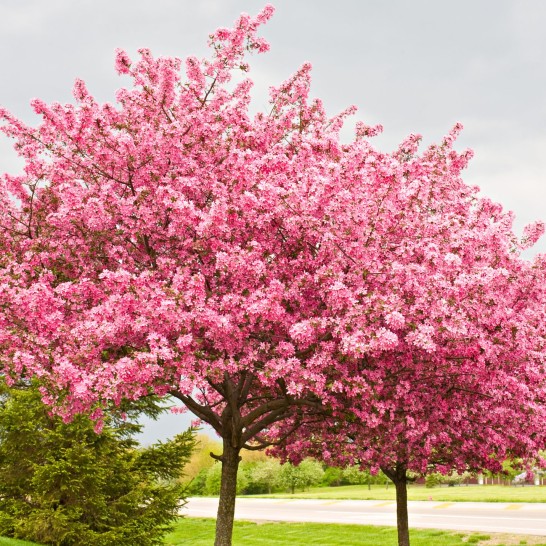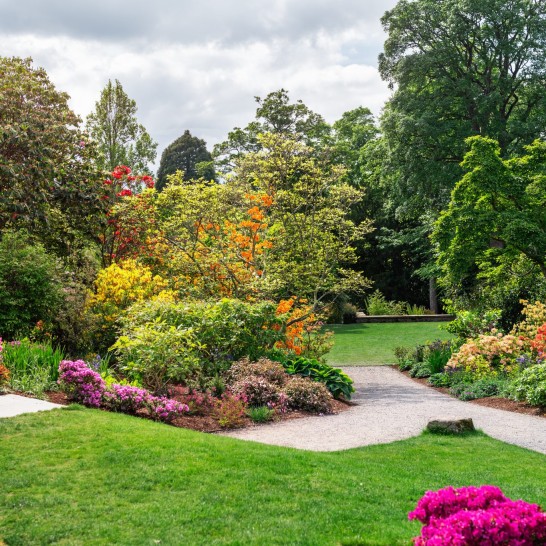March is finally here, and that means so is Spring. Longer days, morning walks in the garden, rain showers and rainbows are excitedly on the horizon. However, if you have spring allergies you may be less excited about the season. Spring is typically defined as starting with the vernal equinox, and this year that is March 20. Of course, our allergies don’t need a calendar to tell us that tree pollen, the main culprit of the sniffles and sneezes during spring allergy season, is already here!
Trees typically start producing pollen as early as January in the Southern areas of the U.S. The Northern and Central areas follow with pollen production sometime in February. One outlier, the Ashe Juniper Tree (commonly called Mountain Cedar) wreaks havoc in Oklahoma and Texas as early as December. Many trees will continue to produce pollen through June. Also, the milder the winter season, the earlier the trees begin producing pollen. Similarly, late winter or early spring snowfall leads to more pollen. The copious amounts of moisture produced when the snow melts allows a greater volume of pollen production.
Understanding Pollen
Pollen is a powdery substance made up of small spores that come from male trees and flowers. There are two primary types of pollen. The first pollen type, “Sticky Pollen” is produced by plants and trees that have bright and attractive flowers. This kind of pollen sticks to bees and is transported during flight, fertilizing other plants. These bright flowers are commonly thought to be spring allergy offenders. However, sticky pollen doesn’t release much pollen into the air, so they are likely not driving most allergy symptoms.
The other type of pollen is “Wind-Blown Pollen”. This pollen comes from larger trees like pine and oak. The pollen is released in large quantities into the air, fertilizing other trees of the same species. The pollen that causes stereotypical allergy symptoms like nasal congestion, runny nose, and itchy eyes is usually the wind-blown pollen. This pollen is very small and light, and is easily spread by the wind for miles and miles.
Allergy sufferers can benefit from checking local pollen counts to determine the density of pollen in the air on any given day. Pollen counts are determined by collecting pollen on special rods. It is then counted under a microscope and calculated in grains per cubic meter of air. Pollen counts tend to be highest early in the day, or when wind picks up just before a large rainstorm. If you like dancing in the rain, however, you are in luck. During a rainstorm and immediately following, pollen becomes still and dormant due to the rain making it damp and heavy. As the air becomes warm and dry following the storm, the pollen count will become potent again.
Managing Tree Pollen Allergies
For tree pollen allergy sufferers, it is recommended to avoid densely wooded areas, especially in early spring when pollen is the most abundant. If possible, avoid planting trees around the house that can cause allergy symptoms. Pass on major tree offenders like oak, birch, maple, cedar, juniper, and eucalyptus (unless you can guarantee they are female trees). Instead, look for friendlier species such as dogwood, pear, plum, redbud, or crape myrtle.
Pollen counts are never zero, and allergy sufferers will not truly be able to avoid tree pollen in the spring. However, some practices may help alleviate the severity of symptoms. Try utilizing the air conditioner and keeping windows and doors closed at home and in the car. Also, using the dryer instead of hang drying clothing will help decrease pollen exposures. One benefit of COVID-19 is that wearing some masks will help to minimize the amount of pollen that reaches the nasal passages, especially when worn in outdoor settings. Tree pollen allergy suffers should also make a habit of changing their clothes after coming in from being outdoors, and bathing prior to getting into bed/laying on upholstered furniture.
If you know someone that has difficulty with morning walks in the garden and they are unsure whether tree pollen is a trigger for their spring nasal congestion, runny nose, post nasal drip, sneezing, and itchy watery eyes, you can suggest they see their provider for an allergy test. It may provide the clarity they are looking for!
______________________________________________________________________________________________________________________
Amanda Hofmann, MPAS, PA-C, is a graduate of Duquesne University, in Pittsburgh, PA, and spent 8 years in clinical practice before joining United Allergy Services. Amanda is a past president of the Association of PAs in Allergy, Asthma, and Immunology and currently serves as Vice President of Clinical at UAS.
For more interesting insight from United Allergy Services, visit us on Facebook, LinkedIn, or Twitter.
You may also be interested in . . .
A Deep Dive into Summertime Allergies
As the warmth of summer graces us with its presence, many of us are eager to embrace outdoor activities and soak up the sun. However, along with the…
Botanical Sexism: Does it impact allergy sufferers?
What is Botanical Sexism? Tom Ogren, horticulturist and allergy researcher, has done extensive research on ways to reduce pollen counts and pollen…
Tree Pollen and Pollen Counts Explained
March is here, and so is Spring! Spring has officially started which brings longer days, refreshing rain showers, bright colorful flowers, and of…



